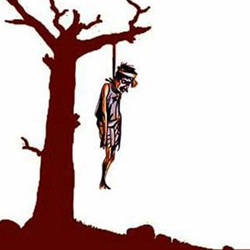When My Fingers Grow Back?
A man came out of his home to admire his new truck. To his puzzlement, his three-year-old son was happily hammering dents into the shiny paint.
The man ran to his son, knocked him away, hammered the little boy's hands into a pulp as punishment. When the father calmed down, he rushed his son to the hospital.

 Policies and Relief based on Report from National Commission on Farmers.
Policies and Relief based on Report from National Commission on Farmers.


 Operation Vijay or Portuguese-Indian War was the Indian armed forces intervention that led to the capture of Portugal's enclaves in India in 1961. The armed action - which involved air, sea and land strikes for over 36 hours, ended 451 years of Portuguese colonial rule in Goa.In Goa, popular support had been built up against Portuguese colonial rule by civil leaders like Ram Manohar Lohia who advocated the use of non-violent Gandhian techniques to oppose the government. A major popular protest against colonial rule on the 18th of June 1946 was brutally suppressed by the Portuguese. Similarly, in 1954, the Portuguese used force to put down an attempt by non-violent Satyagrahi activists to march into Goa, and followed up with a purge of supporters of independence, many of whom were jailed. This action led to the closure of the Indian consulate in the city of Panjim in Goa in 1955 and the imposition of economic sanctions against Portuguese held territories.In addition to non violent protests, several armed groups such as the Azad Gomantak Dal (The Free Goa Party) conducted guerilla and terrorist operations against the Portuguese in Goa.
Operation Vijay or Portuguese-Indian War was the Indian armed forces intervention that led to the capture of Portugal's enclaves in India in 1961. The armed action - which involved air, sea and land strikes for over 36 hours, ended 451 years of Portuguese colonial rule in Goa.In Goa, popular support had been built up against Portuguese colonial rule by civil leaders like Ram Manohar Lohia who advocated the use of non-violent Gandhian techniques to oppose the government. A major popular protest against colonial rule on the 18th of June 1946 was brutally suppressed by the Portuguese. Similarly, in 1954, the Portuguese used force to put down an attempt by non-violent Satyagrahi activists to march into Goa, and followed up with a purge of supporters of independence, many of whom were jailed. This action led to the closure of the Indian consulate in the city of Panjim in Goa in 1955 and the imposition of economic sanctions against Portuguese held territories.In addition to non violent protests, several armed groups such as the Azad Gomantak Dal (The Free Goa Party) conducted guerilla and terrorist operations against the Portuguese in Goa.